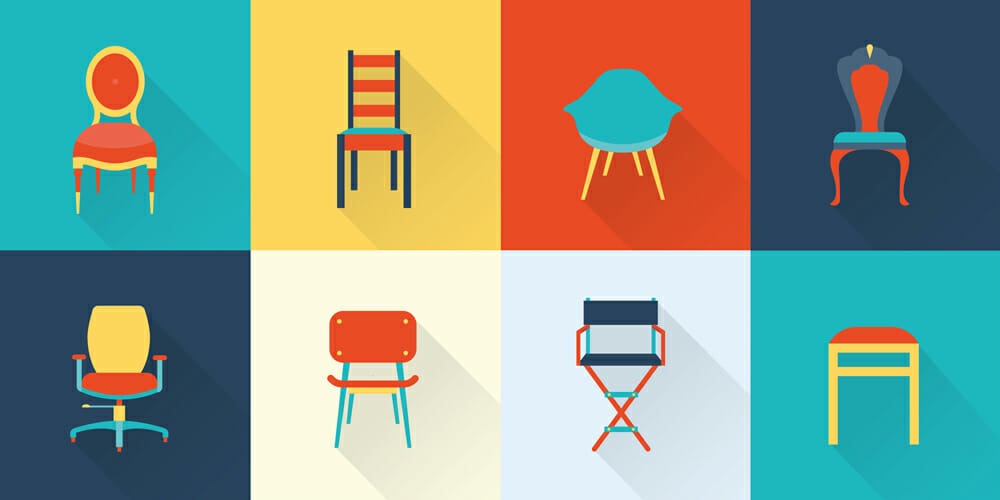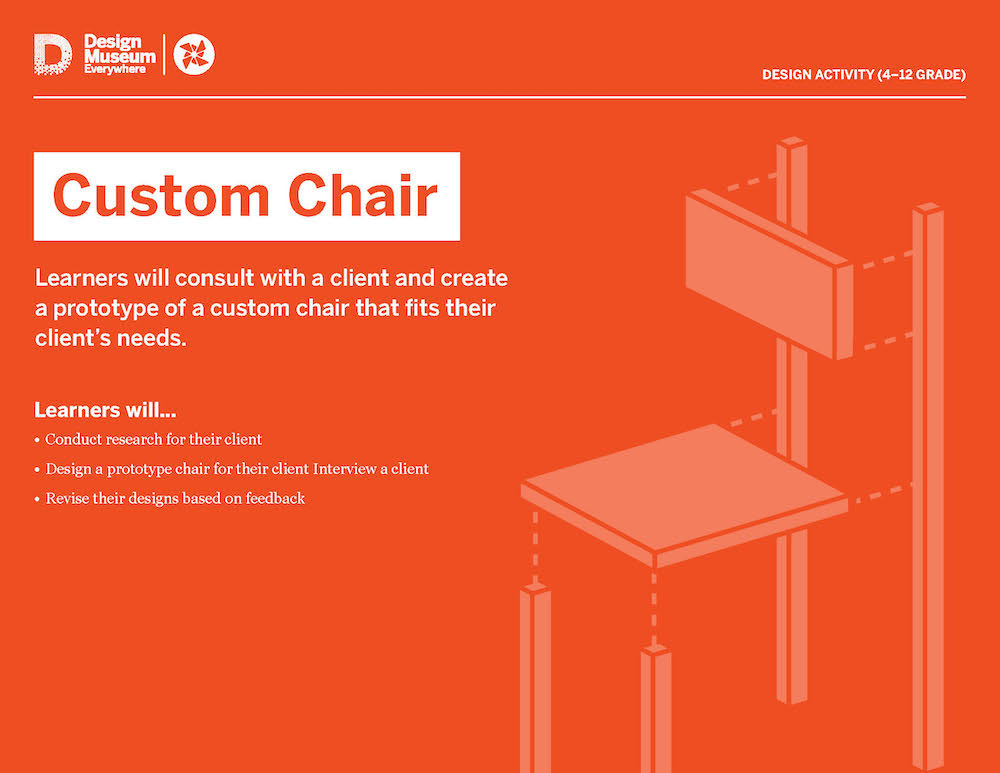Custom Chair
Design Activity (4-12 Grade)
Learners will consult with a client and create a prototype of a custom chair that fits their client’s needs.

Learners will…
Conduct research for their client Design a prototype chair for their client Interview a client Revise their designs based on feedback
Share your creations on social media with #DesignTogether and we’ll feature examples in our Design Together online gallery.
INSTRUCTIONS
- Before starting, gather building materials. Anything you can find around the house will work. Think paper, popsicle sticks, cupcake liners, toilet paper or paper towel rolls, pipe cleaners, disposable cups and plates, etc. Download the instructions for playdough recipes!
- The challenge is for your learner to build a scaled down prototype of a chair for their client. You can assign the client, or have them choose for themselves. Anyone works as long as they can do some research about their client’s need.
- Once your learner has their client, they will need to conduct research to learn more about their client needs. This can be accomplished in a number of ways including interviews, observation (especially fun if your client is family pet), internet research, etc.
Sample Interview Questions: What would you like to be doing in this chair? What was the least comfortable chair you ever sat in and why? Sample Observation Topics: Where does your client rest the most? Do the gravitate towards certain materials over others (wood, fabric, etc). How long do they stay in one place? - Once your learner has built up enough research, ask them to organize their findings. How does their data translate to possible chair ideas?
Sample Data Point: My client is constantly moving around, maybe I can build in wheels or a bounce to the chair to allow for movement. - Encourage your learner to sketch out their ideas before using any building materials. This is the ideation phase, the more sketches the better!
- It’s time to build. Your learner should choose their top two ideas and create a physical prototype from the building materials available.
- Once built, have them take their prototype for review. What’s their client’s feedback?
- Optional choice to take the feedback and reiterate their design. What can they do to improve upon their first design?
